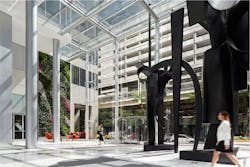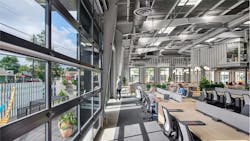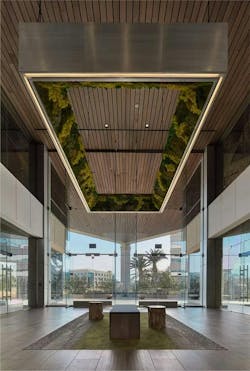The new definition of Class A property
Recent surveys and user feedback tell us that while encouraging a return to the workplace many organizations are overlooking employees’ primary dissatisfaction with working from the office: the commute. In fact, when a 2021 FlexJobs survey asked respondents to name their favorite aspect of remote work, “not having a commute” was the most popular answer chosen (by 84% of respondents). This is understandable when we consider that before the pandemic, the average American spent almost an hour commuting to and from work each day.
Similarly, another recent survey found that the cost of commuting was a concern for 31% of those surveyed, something that recent inflation and increases in gas prices will only exacerbate. When paired with environmental concerns about the impact personal vehicles have on global emissions, employees and employers have ample motivation to reduce commute times.
As organizations consider a myriad of incentives for attracting employees back to the workplace and overcoming objections to the morning commute—employee transit reimbursement, hybrid work, carpooling programs, and more—a subset of organizations are reconsidering their workplace ecosystem.
The "hub and spoke" model, where organizations maintain a central or regional headquarters/hub as well as a number of satellite offices (spokes), is not a recent development in the workplace conversation, but the pandemic has spawned renewed interest in the concept. Within the industry we hear that organizations implementing hybrid work strategies now see these satellite spaces as a viable solution to the potential burden a daily commute can impose on some employees, which could significantly impact the current definition of “Class A Property.”
Impact on the Commute
Dan Cheetham, Managing Director and founder of FYOOG, thinks this approach could have a profound effect on properties once considered Class B. “The proximity to the workforce and other amenities could effectively turn some of these peripheral properties into a new kind of Class A,” he explains. "Institutional owners maintaining a mixture of property types have historically prioritized the amenity experiences in their central business district (CBD) buildings, but we're now seeing some of that focus shift to their regional properties."
IA Project Director Jim Camp is hearing similar conversations in the market, noting that "there are going to be some interesting opportunities for developers and asset managers that engage in renovation work to capitalize on users wanting to work closer to where they live.”
Different Types of Amenities
Dan sees a trend wherein owners are beginning to amenitize these satellite buildings that previously were never intended to have offerings traditionally reserved for CBD assets. While acknowledging the inherent convenience of working in a metropolitan center, Cheetham also sees satellite offices as offering additional benefits beyond the easier commute that some employees might be seeking. He points to the unique contextual relationships they may have with adjacent open spaces, community-serving retail, and other factors that generally vary by market and location.
As a result, many companies are changing the focus of their investments within large portfolios to address this shift, which is creating a programmatic change in how companies are dealing with their CBD workplaces. "The hub spaces are becoming show spaces, or client-forward spaces, while shifting more of the workplace into regional satellites," Dan notes.
The nature of these amenities is changing, something the FYOOG founder is seeing in his current project work. “The arms race for golf simulators, climbing walls, and bowling lanes, etc.—which we saw prior to COVID—has shifted to an emphasis on health and wellness, biophilia, and ESG (environmental, social, and corporate governance).”
With these new amenities also comes a marked change of priorities that make for a more holistic approach, especially among landlords. As Camp explains, “We’re making sure that we take a more integrated approach—there’s a common thread in the amenities, and they’re being prioritized on the floor plate as compared to what we’ve seen in the past.” He elaborates, “The days of utilizing non-rentable space for amenities are over. Amenities are now occupying some of the most desirable spaces within buildings.”
Differentiating Spokes
Cheetham theorizes that depending on how close the spoke locations are to each other the industry might see organizations enabling or encouraging employees to visit multiple satellites offering different employee experiences at each one. “I think [organizations] could potentially leverage programmatic or contextual idiosyncrasies in their regional assets. If they’re located in a major city where you have equal access to two or three locations, we could see individuals making a choice based on who's working in those places on which days or what amenities there are and using that as a rationale for moving around.”
Along those same lines, regional offices also offer organizations the opportunity to create testing grounds where lessons can be learned and later applied to their headquarters spaces. Camp has already seen this approach in a number of organizations. “They’re able to use these spaces as ways to evolve their culture and their workplace standards or pilot more innovative concepts,” he notes. “These smaller, suburban spaces are an opportunity for exploration in developing a work culture.”
A Competitive Market
Both Dan and Jim think the near future will be a competitive time for owners in many markets. “We’ve talked to several owners of older properties who are seeing competition from newer developments that will likely capture increased market share if the older properties fail to adapt,” explains Cheetham.
While adapting older buildings with new amenities can create building code challenges, Dan and Jim are already embracing a wide variety of creative solutions that are enabling owners to capitalize on this growing movement.


